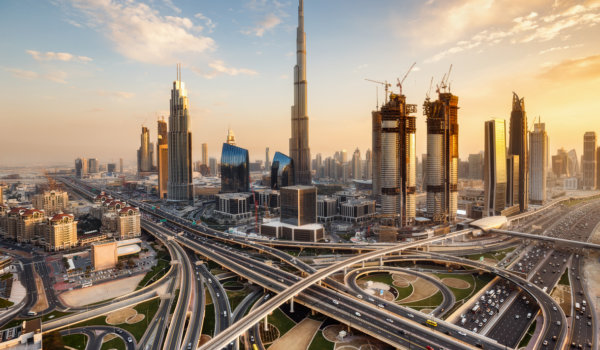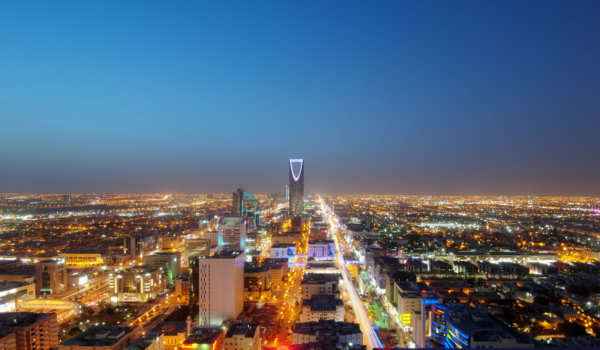In an era of geopolitical uncertainty and global supply chain fragility, governments worldwide are scrambling to reshore production and reduce external dependencies. The United States, under both Trump and Biden, has embraced protectionist tariffs and subsidy-heavy industrial policy under the guise of “America First.” But the Gulf is pursuing a smarter, more sustainable path – one rooted in incentivisation, industrial partnerships, and long-term economic transformation.
Across the Gulf Cooperation Council (GCC), countries like Saudi Arabia and the United Arab Emirates are not only embracing self-sufficiency – they are engineering it. Through targeted financial incentives, regulatory easing, and deep public-private collaboration, the region is repositioning itself from being a net importer to a competitive producer across sectors critical to national security and economic resilience – namely pharmaceuticals, agritech, and industrial goods.
The Gulf’s strategy is inherently pragmatic and seeks to establish global supply chains across manufacturing ecosystems. It doesn’t seek to close borders, but rather to open opportunities. Instead of imposing punitive tariffs or forcing companies to return home, Gulf governments are making it economically rational for them to come willingly.
The Data Behind the Strategy
Saudi Arabia’s Local Content and Government Procurement Authority (LCGPA) has already influenced over SAR 220 billion (USD 58.7 billion) in procurement contracts since 2018, according to official statements from the authority. These local content requirements ensure that manufacturing contracts favour domestic producers, incentivising long-term capability building across industrial and pharma supply chains.
The National Industrial Development and Logistics Program (NIDLP) offers up to 50% capital cost support for industrial investors, especially those aligned with Vision 2030 priorities. The program reported facilitating over USD 20 billion in industrial investments in 2023 alone (Source: NIDLP Annual Report 2023).
In the UAE, the In-Country Value (ICV) program – originated by ADNOC and now adopted federally – redirected over AED 51 billion (USD 13.9 billion) into the local economy in 2022 through preferential procurement mechanisms (Source: UAE Ministry of Industry and Advanced Technology, 2023). This isn’t market distortion – it’s targeted industrial policy to strengthen value chains at home.
Moreover, these incentives aren’t just financial – they’re infrastructural. Abu Dhabi’s Industrial Strategy 2031 aims to double the size of its manufacturing sector to AED 172 billion (USD 46.8 billion) by 2031, creating 13,600 skilled jobs and increasing non-oil exports by 143% (Source: Abu Dhabi Department of Economic Development, 2023).
Comparing Approaches: GCC Incentives vs. Trump’s Trade Walls
The core difference between the GCC and the U.S. approach is philosophical. While Trump-era policies relied heavily on tariff-based punishment, the Gulf incentivises performance. The 2018 U.S. steel and aluminum tariffs, for example, led to an estimated $900,000 cost per job saved, while triggering WTO disputes and retaliatory measures and a subsequent increase of USD 5.6 billion total cost to consumers and businesses annually. (Source: Peterson Institute for International Economics, 2019).
By contrast, Gulf governments are using catalytic capital to de-risk entry and scale-up for global and regional manufacturers. For example, the Saudi Industrial Development Fund (SIDF) offers subsidised financing covering up to 75% of capital expenditure for pharmaceutical producers targeting local essential medicine supply – a direct response to lessons learned during COVID-19-induced shortages (Source: SIDF Pharma Program Overview, 2023).
In agri-tech and food security, the UAE’s National Food Security Strategy includes customs exemptions, zero corporate tax for 50 years, and 100% foreign ownership for agriculture ventures in selected zones. In 2022, the UAE imported over USD 15 billion worth of food products – making localised production of high-consumption crops and animal feed a pressing economic priority (Source: UAE Federal Competitiveness and Statistics Centre, 2023).
From Incentives to Impact
Yes, these efforts involve state spending – but they are designed as transitionary levers, not permanent subsidies. The aim is to build critical mass and unlock economies of scale. And it’s working. According to the Saudi Ministry of Industry and Mineral Resources, the Kingdom issued 1,536 new industrial licenses in 2023, a 46% increase year-on-year. Meanwhile, UAE’s non-oil industrial exports reached AED 174 billion (USD 47 billion) in 2023 – a record high (Source: UAE Ministry of Economy, 2024).
Conclusion: The Gulf’s Quiet Industrial Revolution
While global headlines remain fixated on giga-projects, a quieter industrial revolution is taking root across the Gulf. The “Made in Saudi” and “Made in the Emirates” campaigns are becoming more than just national branding – they are building resilient economic infrastructure for the post-oil future.
This isn’t about turning inward. It’s about anchoring global value chains locally, where governments act as enablers rather than enforcers. The Gulf has chosen not to emulate the failed protectionism of the past – but to lead with incentives, openness, and strategy.
Self-sufficiency, done right, isn’t isolationist. It’s competitive, catalytic – and in the Gulf, it’s already redefining the future of manufacturing.



